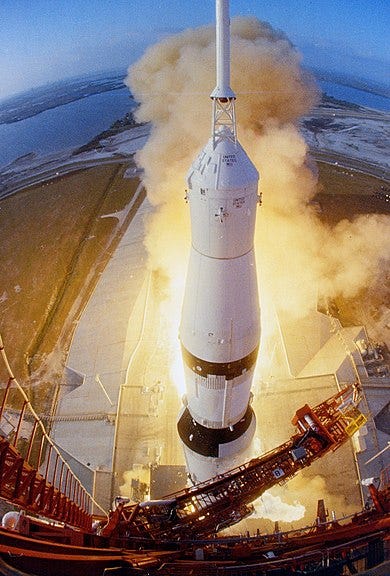April 4, 1968 7:00am
Unmanned Test Flight
Orbits: 3
Duration: 9 hours, 57 minutes, 20 seconds
Apollo 6 would be the final unmanned test of the Saturn V, and the final mission before a manned flight would resume with Apollo 7.
Preparations for the launch were slowed because the Apollo 4 stack was still going through the checkout procedure. While the VAB could handle four Saturn V stacks at one time, there were only enough technicians to check out one at a time.
At launch, everything looked good until two minutes after liftoff. The Saturn IC first stage began experiencing severe pogo vibrations. Parts of the adapter mating the CSM to the third stage were shaken loose. The S-II second stage had problems of its own. Engine number 2 struggled, and the Instrument Unit shut it down completely at T+412 seconds. Two seconds later, engine number 3 shut down. The flight computer adjusted, and the remaining three engines burned for an extra 58 seconds to make up the difference. Then the S-IVB third stage had minor problems but made it into orbit.
The S-IVB’s job included driving the CSM out of Earth orbit on a translunar injection to the Moon. But on this test, the S-IVB engine didn’t restart. NASA had to settle on firing the Service Module engine to drive the CSM to an altitude of 13,797 miles before sending it plunging back toward earth at a speed of 375 miles a second. That was slower than a CSM would experience returning from the Moon, but that had been successfully tested already on Apollo 4.
Despite the pogo problems, NASA was satisfied with the results of the flight.



